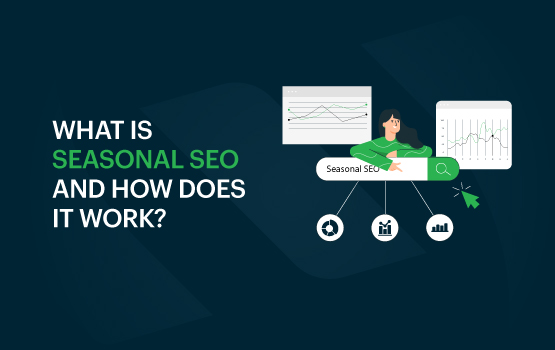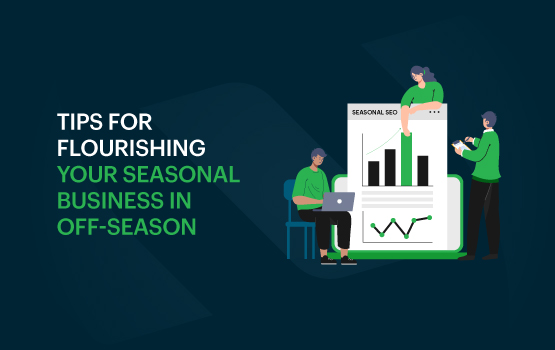Seasonal SEO helps you reach more people at the right time of year. With the changing seasons, people’s needs change too. Some products and services are popular all year, while others are only in demand during certain times.
To connect with the right audience when they need your product or service the most, it’s important to use Seasonal SEO. This checklist will help you get ready for 2024 and beyond.
What is Seasonal SEO and How Does It Work?
As the name suggests, seasonal SEO is all about taking advantage of the various trends and holidays that align with each season.
It uses the same fundamental approaches as SEO but instead considers the changing seasons’ demand for different products and services. Increasing conversions within a short timeframe is the aim of seasonal SEO.
Seasonal SEO Strategies with Examples
Seasonal SEO involves adapting your content and keywords to match what people search for during different times of the year. Here are the main types:
Holiday SEO:
Focus on popular holidays like Christmas or Valentine’s Day. For example, a gift shop could optimize for “best Christmas gifts” in December.
Event-Based SEO:
Customize your content around big events like the Olympics or a major product launch. A sports store could use “Olympics gear” to attract searches before the games.
Weather-Related SEO:
Adjust for seasonal weather changes. A clothing store might target “winter jackets” in the fall and “summer dresses” in the spring.
Trend-Based SEO:
Keep up with the latest trends that are popular for a short time. For example, if a new diet becomes popular in January, a food blog might focus on recipes related to that diet.
Importance of Seasonal SEO
Seasonal SEO is necessary to boost your company’s conversions. You will increase sales if you market your goods or services when people most likely need them. It gives your business access to new ways to generate profits.
- Seasonal SEO is a great tool to help your business grow.
- It guides us on when and what SEO tasks to focus on throughout the year.
- It helps us handle marketing during times when business is not in demand.
- Seasonal SEO impacts data and reports, helping in understanding clicks, impressions, and rankings better.
Tools To Check Your Product or Services’ Seasonal Popularity
It’s obvious that some products or services are more popular during specific months. For example, in monsoons, people often search for raincoats and umbrellas, while in the winter, items like sweaters and heaters are in demand. But there can be some products that you’re not sure exactly where they fit in.
Try these 3 tools to calculate the seasonal popularity of your product.
1. Google Search Console
Google Search Console helps you identify current trends on your website. You can see which pages people visit most often.
It shows details like clicks, impressions, rankings, and devices used. This data covers the last 90 days, so you can spot popular search terms and topics.
One drawback is that it doesn’t show data from previous years, which makes planning for future seasons tough. However, it does help you understand your current campaign and adjust it as keywords become popular or fade.
2. Google Trends
Using Google Trends is a great way to track how your product behaves over time. To determine the ideal time to market your product, you can look into when it is highly searched for.
Certain foods, for example, are more popular during certain times of the year. Summertime is the best time to enjoy watermelon and mangoes, while winter is the best time to enjoy Guavas and Amlas. These changes in product demand can be seen via Google Trends.
You can study how people search for different keywords over time by using Google Trends. You can discover when searches for your keywords are most likely to happen and refine your search by selecting other cities to get more specific results. This helps you decide when to promote your products.
3. Google Keyword Planner
Another ideal tool to assist you in finding relevant terms is Google Keyword Planner. This tool will provide you with a list of related terms to think about when you enter a keyword.
The interest in your search phrases will also be visible to you. This allows you to track changes in interest over time for your keyword. You can determine the peak search hours for your query phrases.
Top Tips for Mastering Seasonal SEO Optimization
1. Analyze Previous Years’ Data
Study the analytical data from previous years first. This historical data gives you important insights into past performance, making it possible to spot trends, patterns, and areas in need of development. Keep a close eye on the times of the year, such as holidays or seasons, when traffic and conversions to your website rise.
2. Optimize On-Page Experience for Conversions
Focus on enhancing the on-page interaction to optimize conversions during high-traffic periods. Give top priority to web performance optimization necessities such as mobile friendliness, loading speed, and obvious call-to-action. To get visitors to take action, create product or service pages that are visually appealing and contain convincing language and high-quality photos.
3. Optimize Content for Seasonal Trends
Create content that is relevant to the recognized seasonal trends. This content can take the form of blog posts, articles, or landing pages that speak to your audience’s requirements and interests during particular times of the year. If you offer outdoor equipment, for example, make content that showcases the top summertime adventure gear.
4. Update Old Content & Use the Right Keywords
Don’t ignore the content you already have. To bring previous articles or product descriptions into line with the latest seasonal trends, review and update them. Make sure you’re utilizing the appropriate keywords for each season by including the terms that are unique to that season that you found through keyword research.
5. Segment Your Strategy
Understand that not every seasonal trend or festival is the same. Divide out your plan so that each season or holiday is handled separately. For example, your summer SEO strategy should be different from your winter SEO strategy because your audience’s demands and interests fluctuate with the seasons.
6. Add Seasonal Visuals
Your seasonal SEO efforts can be greatly improved by using visual elements. Include visuals from the season in your content, such as pictures, infographics, and videos. Images support the seasonal vibe you’re aiming for and also make your material more interesting.
These techniques will help you optimize your seasonal SEO efforts so that you may take full advantage of seasonal patterns and generate significant traffic and conversions all year long.
Upscale Your Seasonal SEO Game Today
Seasonal SEO is more than a trend; it’s a calculated strategy that can revolutionize your online presence. You could reach the full potential of your online strategy by identifying new chances and establishing credibility with relevant content.
At Digihify, we’re experts at providing excellent SEO services, covering every facet of seasonal SEO.




